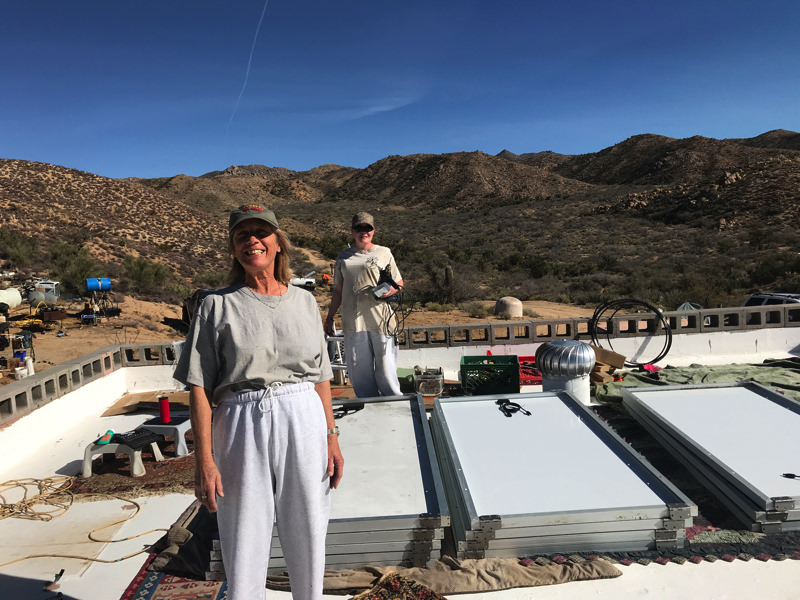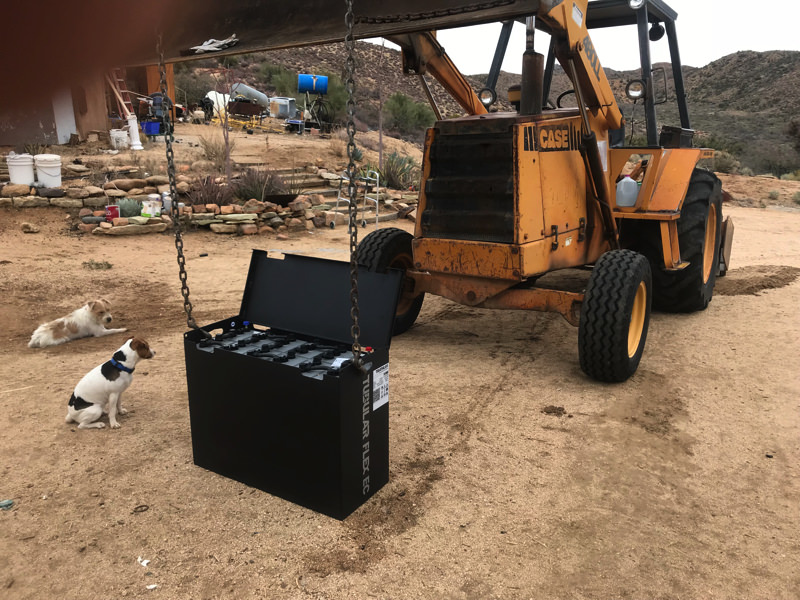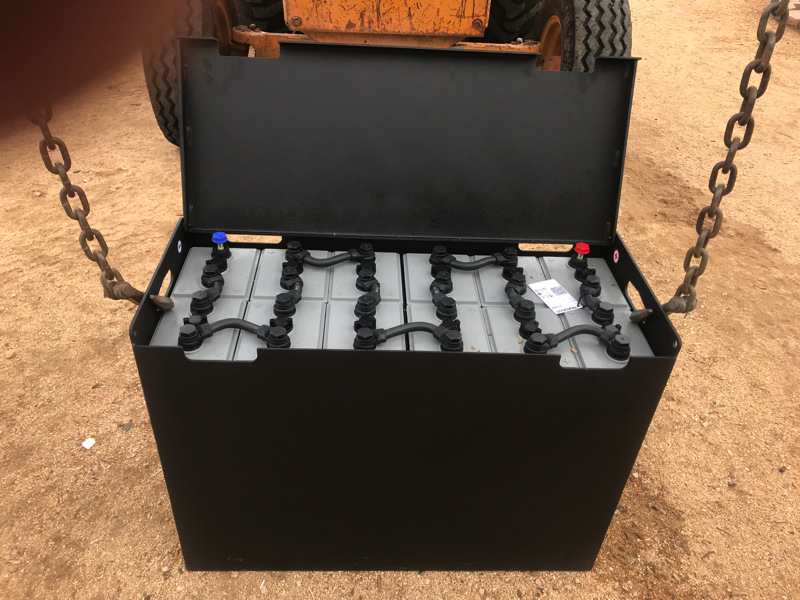You know, I should have taken before pictures, but just plain didn't out of excitement.
Originally, and for quite a few years, we have been using (4 )L-16 Trojan batteries. We usually get about 5 years out of them. We would probably have gotten longer out of them if we had had more panels to give them a good equalization charge every month.
We've been using a 3000 watt truckstop inverter this whole time, and it has done remarkably well.
We used a 50 amp RV charge controller.
We had four large panels that are probably around the 200-250 watt range.
Nontheless it has given us more than enough power for lights, computers etc all day long. But at night I live with a guilty feeling of possibly drawing too much out, so we generally run a 2800 watt generator from sunset to bed time, using about 20 gals of gas each month.
We decided to spend the money, and do an upgrade. We are upgrading from 12V to 24V.
I found some brand new surplus panels on CL.
(12) 285 watt panels $1700
We purchased an Outback 80 charge controller, that just about does everything for you, or is programed in to you likings. $500
A friend in the solar biz sold me a used, pretty honking large inverter, that also works as a charger when the generator gets started. $300. He got from a 5 year old installation where the guy upgraded from 24V to 48V.
The killer of course, is the battery bank. This one is used in a pallet jack, and is brand new (not refurbished)
We found this one commonly referred to as a 12-100-13. It has 12 2V cells, for 24V.
The seller guarantees 10 years minimum, and says he's seen people get as much as 20.
$3000.

This is my Wife and daughter on the roof with the panels. (Well of course I'm up there!)
We have a square house. The panels we hinged to the block and then to the roof.
We decided to face 3 East for the morning sun, 2 West for the later afternoon sun, and 7 South.
The panels vary from 30º to 40º, giving us the best of all worlds.
Here's the battery. 1200 lbs.


More pics to come later.
Originally, and for quite a few years, we have been using (4 )L-16 Trojan batteries. We usually get about 5 years out of them. We would probably have gotten longer out of them if we had had more panels to give them a good equalization charge every month.
We've been using a 3000 watt truckstop inverter this whole time, and it has done remarkably well.
We used a 50 amp RV charge controller.
We had four large panels that are probably around the 200-250 watt range.
Nontheless it has given us more than enough power for lights, computers etc all day long. But at night I live with a guilty feeling of possibly drawing too much out, so we generally run a 2800 watt generator from sunset to bed time, using about 20 gals of gas each month.
We decided to spend the money, and do an upgrade. We are upgrading from 12V to 24V.
I found some brand new surplus panels on CL.
(12) 285 watt panels $1700
We purchased an Outback 80 charge controller, that just about does everything for you, or is programed in to you likings. $500
A friend in the solar biz sold me a used, pretty honking large inverter, that also works as a charger when the generator gets started. $300. He got from a 5 year old installation where the guy upgraded from 24V to 48V.
The killer of course, is the battery bank. This one is used in a pallet jack, and is brand new (not refurbished)
We found this one commonly referred to as a 12-100-13. It has 12 2V cells, for 24V.
The seller guarantees 10 years minimum, and says he's seen people get as much as 20.
$3000.

This is my Wife and daughter on the roof with the panels. (Well of course I'm up there!)
We have a square house. The panels we hinged to the block and then to the roof.
We decided to face 3 East for the morning sun, 2 West for the later afternoon sun, and 7 South.
The panels vary from 30º to 40º, giving us the best of all worlds.
Here's the battery. 1200 lbs.


More pics to come later.


